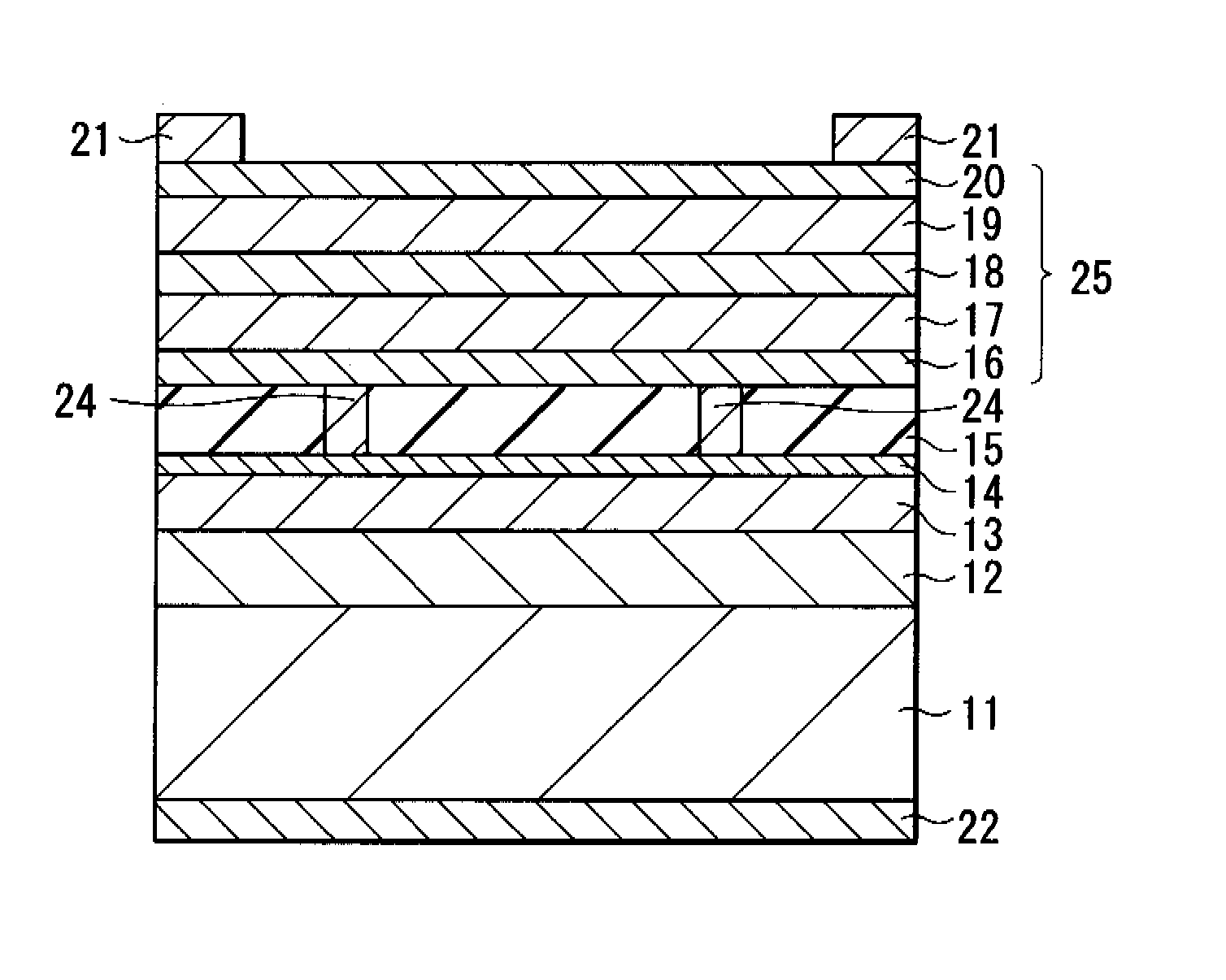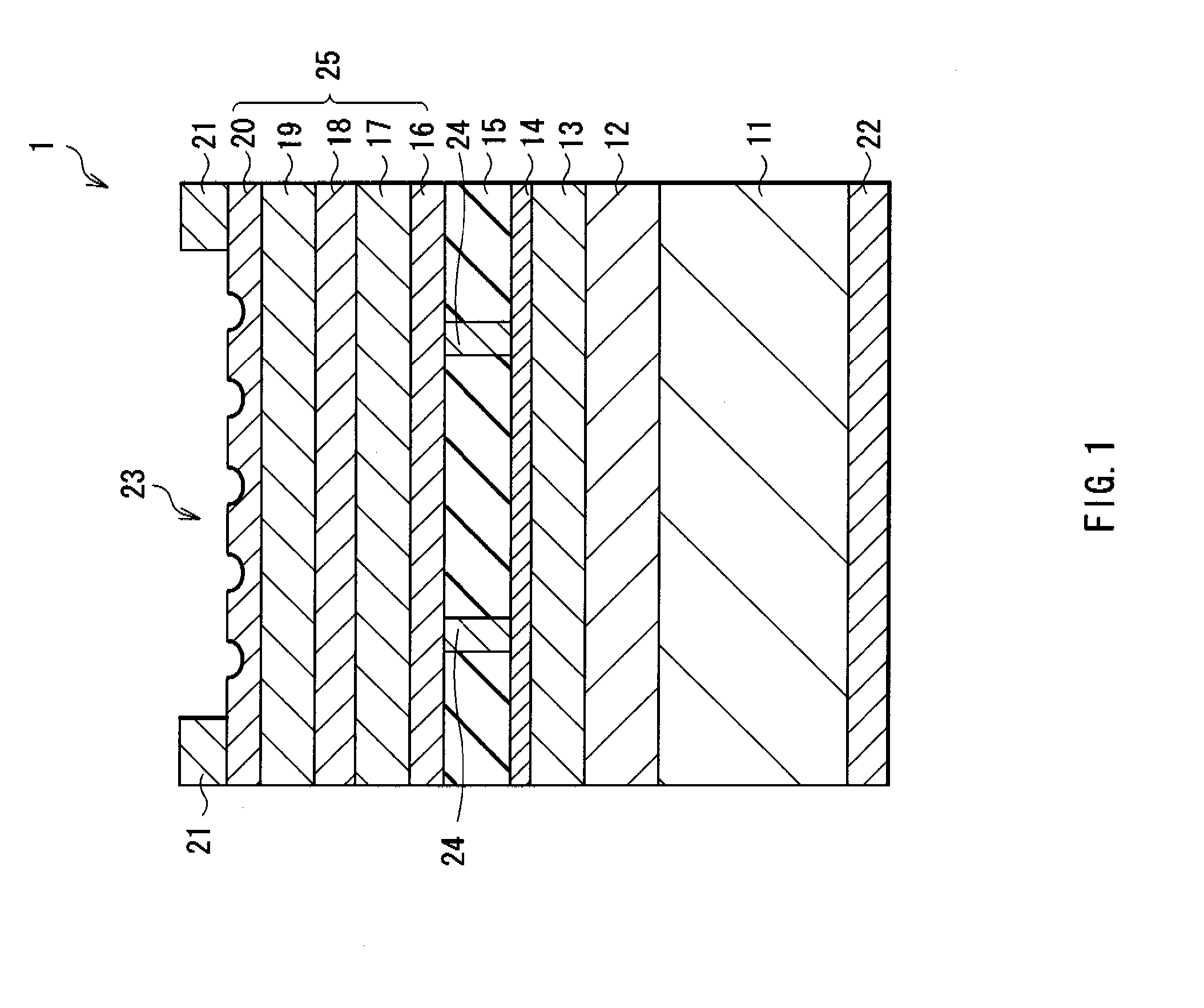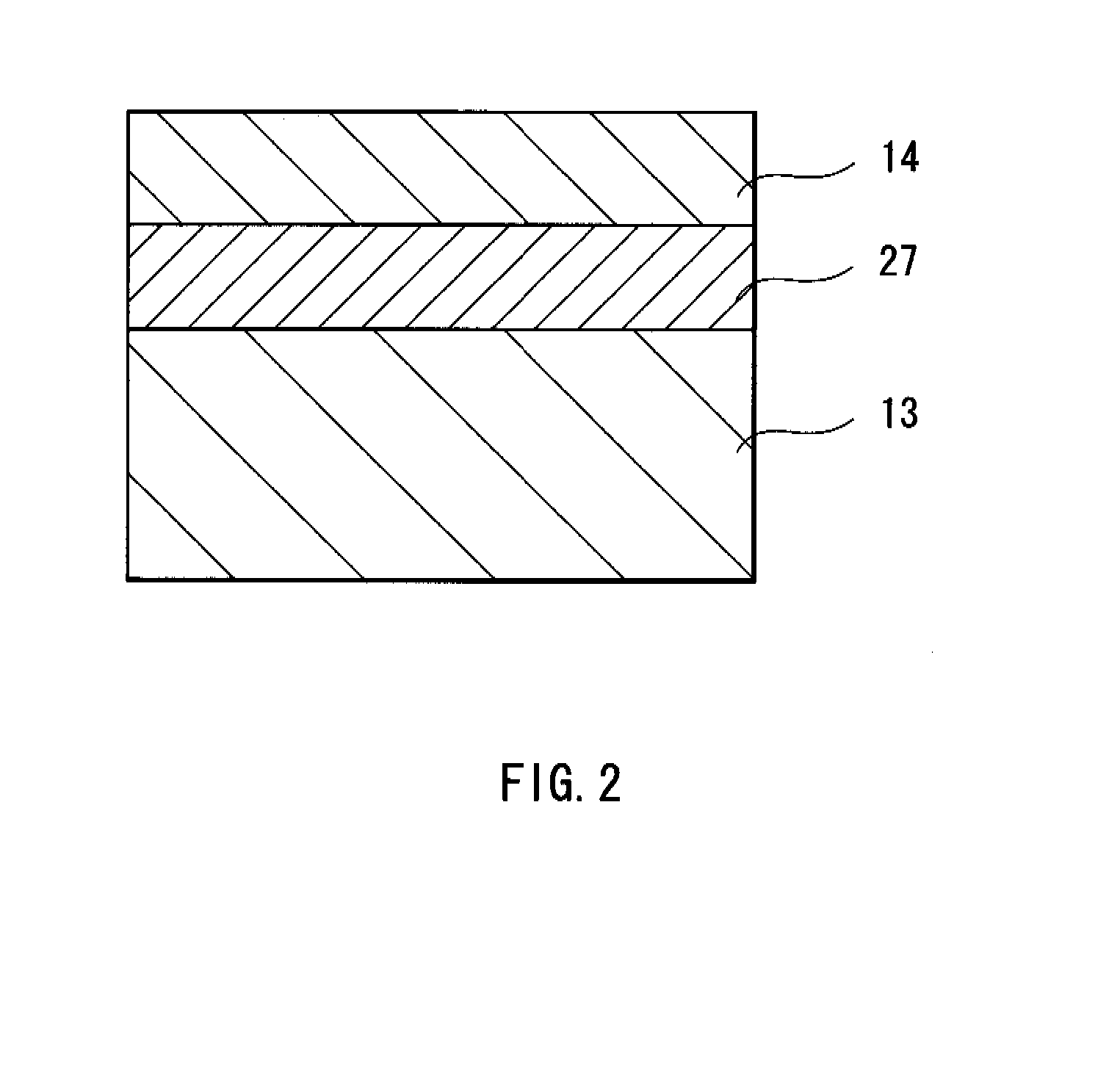Semiconductor light-emitting device and method of manufacturing the same
a technology of semiconductors and light-emitting devices, which is applied in the direction of valve housings, mechanical devices, engine components, etc., can solve the problems of difficult to apply the above-described laminating structure using the junction metal layer, difficult to increase only adhesion, etc., to reduce the tendency to peel, increase the adhesion of the reflective metal layer, and increase the effect of only adhesion
- Summary
- Abstract
- Description
- Claims
- Application Information
AI Technical Summary
Benefits of technology
Problems solved by technology
Method used
Image
Examples
examples
[0044]Here, changes in reflectivity by providing the first metal layer 14 between the insulating layer 15 and the reflective layer (the second metal layer 13) were studied, compared to the case of using only the reflective layer. More specifically, as the insulating layer, a glass substrate was used, and a metal layer made of Al and a metal layer made of Au were deposited on the glass substrate in order, and light entered from the glass substrate side to measure reflectivity. FIGS. 5 and 6 show a relationship between light-emitting wavelengths and reflectivity at that time.
[0045]At first, a plot of FIG. 5 shows measurement results in the case where an Al layer was not laminated (indicated by D in the plot) and the cases where the thickness of the Al layer was 10 nm, and the thickness of the Au layer was 200 nm (indicated by A in the plot), 300 nm (indicated by B in the plot) and 400 nm (indicated by C in the plot). An annealing process after laminating Al was performed at 400° C. In...
PUM
 Login to View More
Login to View More Abstract
Description
Claims
Application Information
 Login to View More
Login to View More - R&D
- Intellectual Property
- Life Sciences
- Materials
- Tech Scout
- Unparalleled Data Quality
- Higher Quality Content
- 60% Fewer Hallucinations
Browse by: Latest US Patents, China's latest patents, Technical Efficacy Thesaurus, Application Domain, Technology Topic, Popular Technical Reports.
© 2025 PatSnap. All rights reserved.Legal|Privacy policy|Modern Slavery Act Transparency Statement|Sitemap|About US| Contact US: help@patsnap.com



